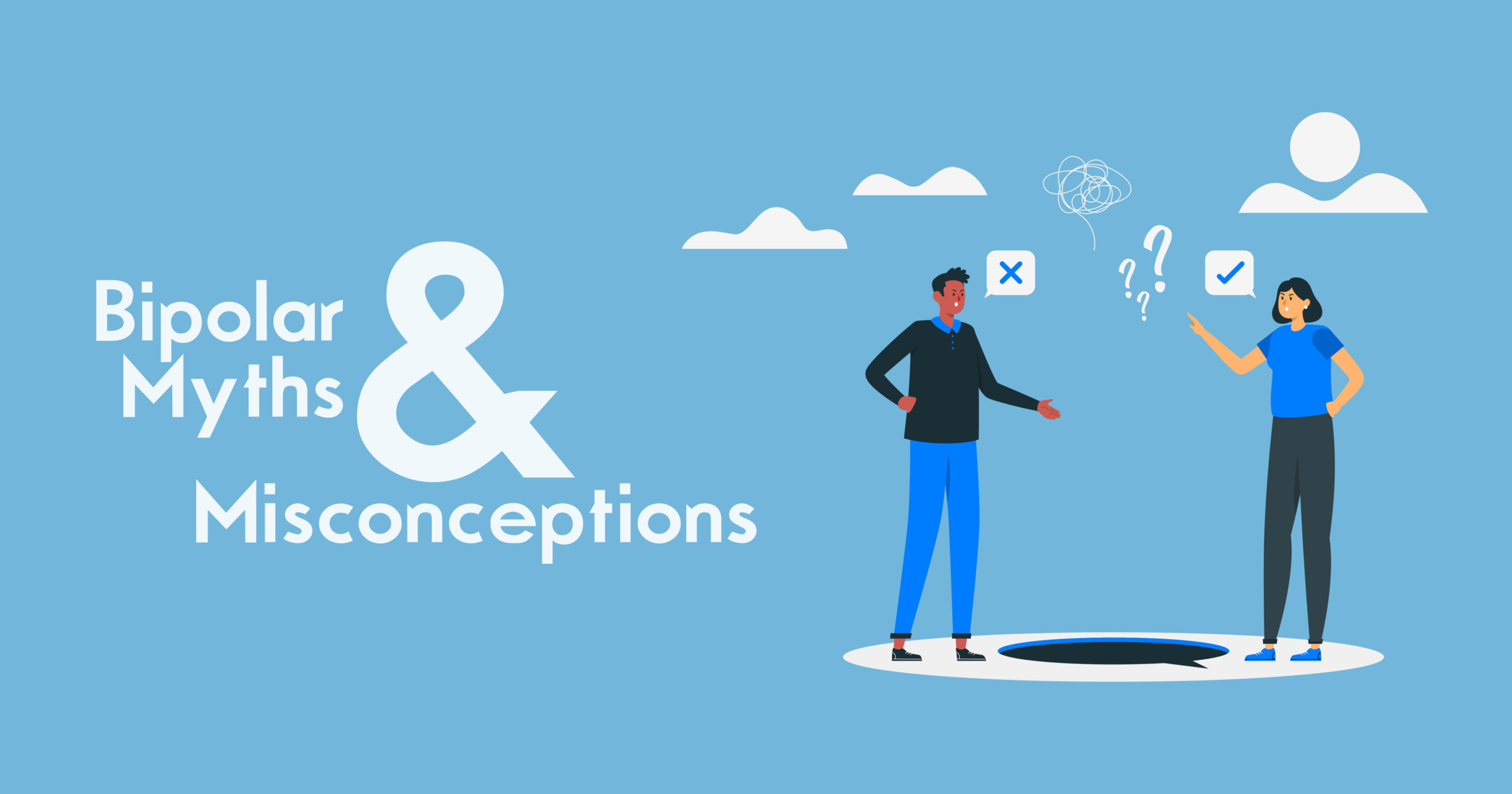Debunking Bipolar Myths: Understanding Reality Beyond Misconceptions
Bipolar disorder is a complex mental health condition characterized by significant mood fluctuations, including manic and depressive episodes. Despite increased awareness and understanding in recent years, numerous myths and misconceptions continue to surround bipolar disorder, often leading to stigma, misdiagnosis, and improper treatment. This blog post aims to dispel some of these myths, providing clarity and insight into the reality of living with bipolar disorder.
Myth 1: Bipolar Disorder Is a Rare Condition
Contrary to the belief that bipolar disorder is rare, it is actually a common psychiatric condition, affecting millions of people worldwide. Studies estimate that up to 2.1% of the adult population will experience bipolar disorder symptoms at some point in their lives, with similar prevalence rates among men and women. Although not the most widespread mental illness, its impact is significant. Bipolar disorder experiences often involve episodes of mania, depression symptoms, and fluctuations in mood. These shifts usually require long-term medical treatment, including a combination of medication management, intensive therapy, and support from mental health professionals to help individuals maintain productive lives and improve their quality of life.

Myth 2: There’s Only One Type of Bipolar Disorder
Bipolar disorder myths often suggest that it is a single condition. In reality, it includes several distinct mood episodes. Bipolar I Disorder involves at least one full-blown manic episode, while Bipolar II Disorder includes a major depressive episode and a hypomanic episode. Cyclothymic disorder, a milder form of bipolar disorder, features chronic mood instability with less severe symptoms. Other presentations include mixed episodes, rapid mood swings, and bipolar disorder in children or youths, which may look different. Understanding these forms of mania and hypomanic symptoms helps in accurate clinical assessment, diagnostic requirements, and effective bipolar disorder treatment services.
Myth 3: Mood Swings Always Indicate Bipolar Disorder
Everyday shifts in mood or emotional highs do not always mean a person has bipolar disorder. While many people go through mood changes, bipolar symptoms people experience are far more intense. These include extreme mood swings, impulsive behavior, and sometimes psychotic symptoms. Bipolar disorder involves distinct episodes of mania and depression, often influenced by personal triggers, family history, or environmental factors. A proper comprehensive evaluation by healthcare providers is essential to determine if a person meets the diagnostic requirements for this brain-based disorder. Mislabeling typical mood changes as bipolar can create barriers to understanding and promote harmful myths.
Myth 4: Bipolar Disorder Means Constant Switching Between Mania and Depression
Many believe people with bipolar disorder constantly move between periods of mania and depression, but this is inaccurate. Bipolar disorder shift occurs over defined periods of time. A manic episode lasts at least one week, a hypomanic episode lasts at least four days, and a depressive episode lasts two weeks or more. Some people experience numerous periods of stability between episodes, living normal lives and managing responsibilities. Treatment can include mood stabilizers, antipsychotic medications, behavioral therapy, and electroconvulsive therapy in severe cases. Addressing these myths with compassionate understanding and advocacy for individuals helps reduce feelings of shame and improves access to care.

Myth 5: Bipolar Disorder Is Just Being Moody
Bipolar disorder’s extreme highs and lows differ significantly from typical moodiness. The condition entails severe changes in energy, activity, and sleep patterns, setting it apart from the mood fluctuations everyone experiences. The high and low phases of bipolar disorder are extreme and often out of context, lasting for extended periods and sometimes requiring hospitalization.
Myth 6: Bipolar Disorder Is Mostly Mania
While mania is a critical component of bipolar disorder, the condition encompasses a broader range of mood disturbances, including hypomania and depression. Episodes with mixed features are also common, where individuals experience both manic/hypomanic and depressive symptoms simultaneously. This broad spectrum of symptoms requires nuanced understanding and treatment approaches.
Myth 7: Mania Is Enjoyable and Harmless
Mania might seem appealing due to heightened energy and activity levels, but it can lead to severe consequences, including risky behavior and impaired judgment. The excitement associated with mania often spirals into irritability and restlessness, highlighting the complexity and potential danger of manic episodes.
Myth 8: Medication Can Be Stopped Once Symptoms Improve
Medication management is a cornerstone of bipolar disorder treatment, aimed at preventing future episodes. Stopping medication without professional guidance can lead to relapse. Combining medication with therapy, lifestyle changes, and support systems forms the most effective treatment strategy.
In Conclusion
Understanding and dispelling myths about bipolar disorder is essential for reducing stigma, promoting accurate diagnosis, and encouraging effective treatment. Awareness and education can empower individuals with bipolar disorder and their loved ones to seek the support and care needed for a fulfilling life. By challenging these misconceptions, we can foster a more inclusive and understanding society.









